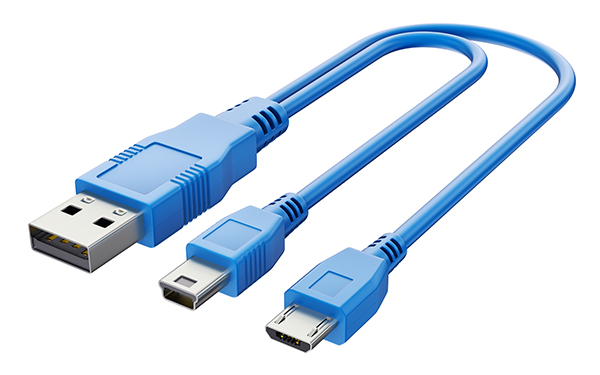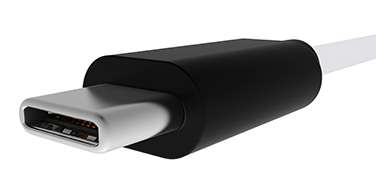In the world of computers, printers, barcode scanners, and basically anything electronic, there exists a wide range and ever-changing environment of interfaces (connections) used to transmit power and information.
In this kind of environment, it is easy to get lost between the various interfaces and makes selecting the right one challenging, to say the least.
We will start this blog series by focusing on the most popular type of modern day connection, the USB.
USB
Short for Universal Serial Bus, and arguably the most common type of connection found these days, the USB interface came to fruition around the 1990’s and has been a mainstay ever since.
The main design started off as a way to standardize the vast connection of computer peripherals (keyboards, pointing devices, printers, etc.) and offer a way for the devices to communicate and supply power.
Over time, the USB has gone through several version changes ranging from 1.0 to the better and faster 3.0 and 3.1 devices. But enough about the past, let’s talk connections.

(Above shows Micro B, Mini B and Standard A)
The most common type of USB connections you will find are:
- USB Type A
- USB Type B
- USB Mini A
- USB Mini B
- USB Micro A
- USB Micro B
What does all that mean to us non-electrical engineers?
Well, when they say a picture is worth 1000 words, I think this is the perfect application. Below is an image of the common connection types you will find out there.

USB Cable Type C
Honorable mention: USB Type C
The new kid on the block in terms of adoption rate, USB type C is the latest in connection types, featuring a small and reversible connector.
This has started to make waves in the cell phone community as companies have been looking for smaller and more user-friendly plugs. Learn more about USB Type C here.
So why is all this important? Well in our world, selecting the right type of interface is essential in order to get devices to pair up and work correctly. If you have ever heard the “square peg in a round hole” analogy, imagine trying to place a male USB type A connection into a female USB type B port. Not gonna happen.
As you can see, nothing short of a sledgehammer would allow these two devices to fit together, and we can completely forget about them ever working right.
Expert Tip: When checking to see what USB connection type you have, it is important to remember to verify the connection at the host (computer) and the device (printer) as they are likely to be different, requiring a cable that offers both.
In summary, getting the correct interface for your computer, printer, mouse, etc. is crucial in order to allow your devices to talk to one another.
The next time you go to order a USB cord, stop and take a look and the connection you currently have or plan on using to make sure you are getting the right one.
If you are still unsure, or have any questions about what connection you may have, the upcoming blogs in this miniseries will provide more information.
And as always, feel free to call us with questions and we will be happy to help figure this out with you.
***Future blogs to include serial, parallel, ps2, Ethernet and anything else I can think to add as this progresses***
About the Author:
 Brandon is a member of L-Tron’s Sales Team specializing in the webstore and inside sales rep duties. When he is not at work, you can find Brandon skiing, traveling or playing his guitar. You can reach Brandon at 800-830-9523, x116 or email Brandon.Morabito@L-Tron.com.
Brandon is a member of L-Tron’s Sales Team specializing in the webstore and inside sales rep duties. When he is not at work, you can find Brandon skiing, traveling or playing his guitar. You can reach Brandon at 800-830-9523, x116 or email Brandon.Morabito@L-Tron.com.













